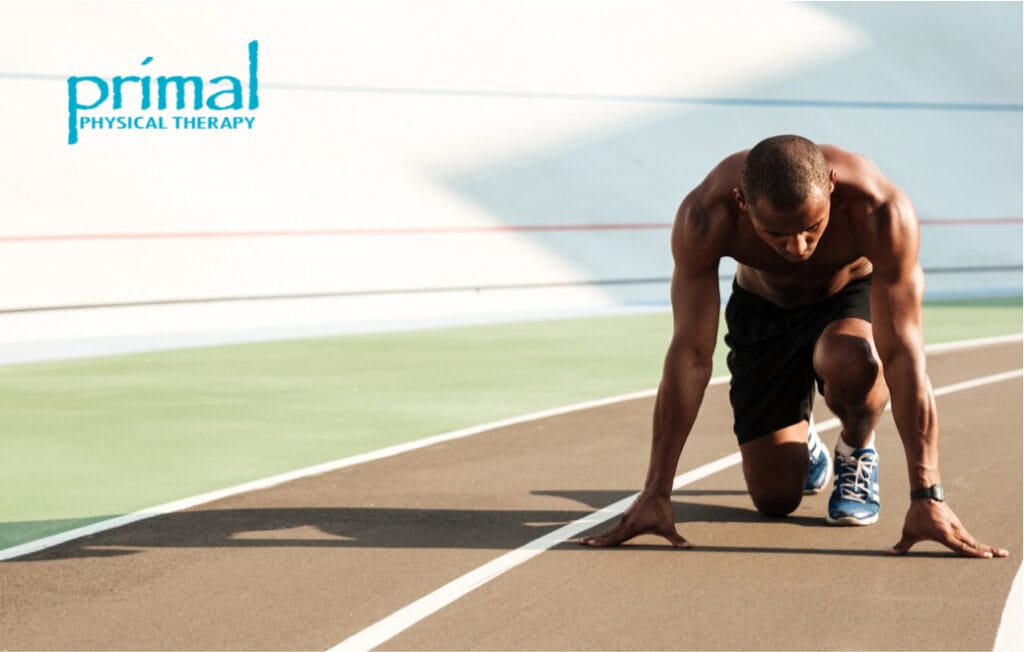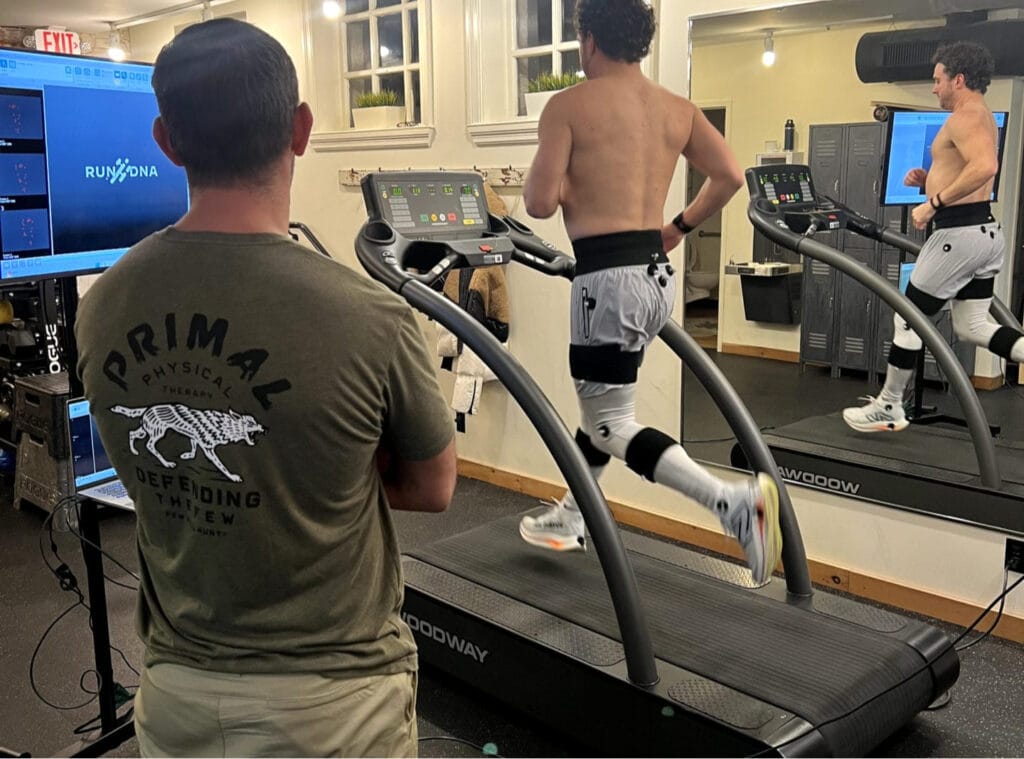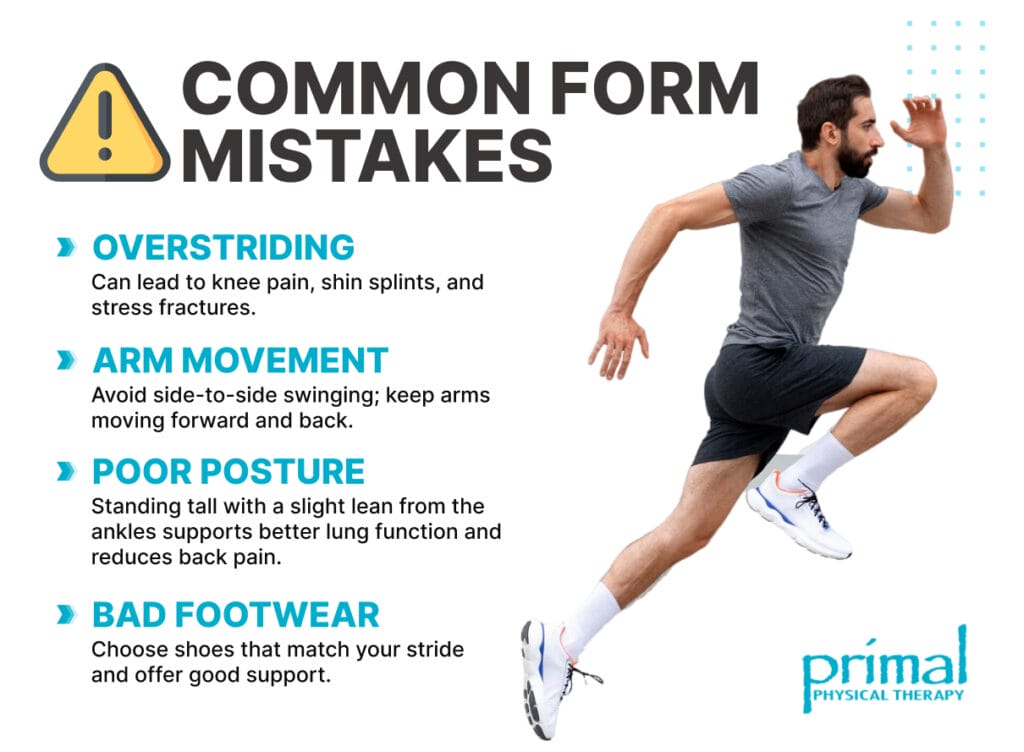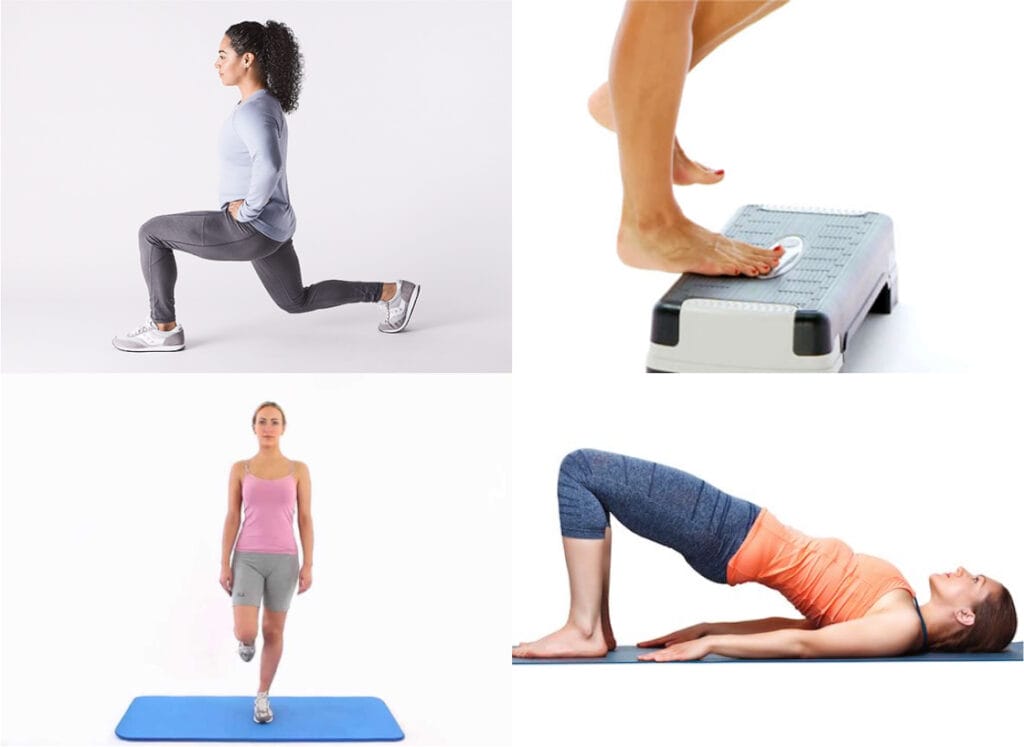If you’re a runner, it’s so important to have a good running form. As a physical therapist, I receive countless questions about how to improve in that area. So, to answer your questions, I’ve put together this guide.

Techniques to Improve Form
I always tell my patients that mastering running form is important for performance and injury prevention. Running form refers to the mechanics of how you run, including posture, stride, and foot strike. Each component is important for how well and safely you can run. Improving your form is a proactive way to get better and reduce injury. Here are the key techniques to correct your posture, optimize your stride, and fine-tune your foot strike.
Gait Analysis

Many sports clinics and running shops, like Primal Physical Therapy, offer gait analysis. Through video analysis, I can slow down your running gait and identify any inefficiencies or abnormalities. This will give you a breakdown of your foot strike, stride length, and overall body alignment.
Then, I’ll help you choose the right running shoes and orthotics. It will also give you valuable information on how to fine-tune your running form and reduce the risk of injury.
Posture
Keep your head up, focusing straight ahead to maintain a neutral position for your neck and back. Relax your shoulders, keeping them back and down to reduce tension and encourage a natural arm swing. Engage your core with a subtle contraction to support your spine and lower back, stabilizing your torso. Position your hips directly under your torso for better balance and power in your stride.
Stride Length and Cadence
Keep your landing foot under your body rather than in front to avoid overstriding, which helps reduce braking forces and lessens the impact on your knees and hips. Focus on increasing your step count per minute; a cadence of around 170-180 steps is linked to lower impact on the body. You can monitor and adjust your cadence using a metronome app or running watch. Include drills like butt kicks, high knees, and skips in your warm-ups to enhance neuromuscular coordination, which can help refine your stride length and increase your cadence.
Foot Strike
Start by becoming aware of your natural foot strike. Record a video of yourself running to determine if you land on your heel, midfoot, or forefoot. If you’re transitioning to a different foot strike, take it gradually.
For example, heel strikers moving to a midfoot strike should focus on landing softer and avoiding overextending the leg. Strengthen your calves and ankles with exercises like calf raises and toe curls to support a forward foot strike. You can also incorporate barefoot or minimalist shoe running into your routine, beginning with short distances on soft surfaces to strengthen your feet and lower legs.

Common Form Mistakes
Even experienced runners can get into habits that ruin their form and increase their risk of injury. Knowing what these common mistakes are is the first step to fixing them. Here, I’ll list some of the most common mistakes I see in patients and the injuries they can lead to.
- Overstriding: It’s when your foot lands too far in front of your center of gravity, and your heel strikes the ground with impact. Not only does this slow you down, but it puts more stress on your lower legs. Overstriding can lead to a runner’s knee, shin splints, and stress fractures.
- Arm movement: Some runners swing their arms from side to side, which can waste energy and cause them to lose balance. Your arms should move forward and back in a straight line with your elbows at around 90 degrees. A good arm swing propels you forward and maintains balance, reducing the risk of falls and associated injuries.
- Poor posture: Slouching or leaning too far forward from the waist rather than the ankles can strain the neck and back. This often leads to back pain and can affect breathing efficiency, which is key to endurance running. Standing tall with a slight forward lean from the ankles helps to distribute impact forces more evenly and supports better lung function.
- Bad footwear: Shoes that don’t fit your foot type or running style can cause poor foot strike, lack of support, and ultimately discomfort and injury. Choose footwear that matches your natural stride and has enough cushioning and support.

Exercises to Improve Your Running Form
Improving your running form isn’t just about running more or faster; it’s also about specific exercises that strengthen the important muscle groups for good form. Here are some targeted exercises to strengthen core stability, leg strength, and ankle flexibility. Add these into your training, and you’ll run more efficiently and reduce the risk of injury.
Core Stability: Planks
- How to do: Lie face down, then lift your body off the ground with your forearms and toes. Keep your elbows under your shoulders and your body in a straight line from head to heels.
- Benefits: Strengthens the whole core, which is key to good running posture and balance.
- Variations: Side planks are used to target obliques, and extended arm plank is used for extra difficulty.
Leg Strength: Lunges
- How to do: Stand with your feet together. Step forward with one leg and lower your body until both knees are bent at 90 degrees. The back knee should be hovering just above the ground. Push back to the start and repeat with the other leg.
- Benefits: Strengthens the hips, glutes, quads, and hamstrings, which are key for powerful running strides.
- Variations: Walking lunges for movement, reverse lunges for glute focus.
Ankle Flexibility: Heel Drops
- How to do: Stand on a step or platform with the balls of your feet on the edge. Slowly lower your heels down below the step, and then raise them back up to the start.
- Benefits: Increases calf and Achilles tendon flexibility and foot strike mechanics and reduces injury risk.
- Variations: Single leg heel drops for an extra challenge, add weights for extra resistance.
Hip Flexor Strength: Bridge Raises
- How to do this: Lie on your back with your knees bent and your feet flat on the floor. Lift your hips up towards the ceiling, making a straight line from shoulders to knees. Hold for a few seconds, then lower back down.
- Benefits: Strengthens hip flexors and lower back, improves running efficiency and stability.
Balance and Stability: Single-Leg Stands
- How to do: Stand on one leg and hold for as long as you can. Try to get to 30 seconds on each leg.
- Benefits: Improves balance, strengthens ankle and foot muscles, and coordination for good running form.
Live Better by Running Better
Incorporating these insights and exercises into your training routine can lead to substantial improvements in your running form, helping you run more efficiently and with less risk of injury.
As a physical therapist, I am dedicated to helping you understand and apply these principles, ensuring that your next run is faster or longer, safer, and more enjoyable. Remember, small changes can make a big difference in how you feel during and after your runs. Keep striving for improvement, and don’t hesitate to reach out for professional guidance to refine your technique further.